Maroc Telecom stays on course despite a revision of its target price
As part of our analysis of Maroc Telecom’s 2025 achievements and in light of the sector’s identified trends, we have updated our growth assumptions for the 2026E–2028E period. Following this exercise, we have revised downward our target price of Maroc Telecom stock, from MAD 122 previously to MAD 110.
Based on a market price of MAD 121, we recommend HOLDING Maroc Telecom, supported by its "high-yield" profile.
Our analysis of Maroc Telecom Group is based on the following points:
- The operator's achievements during H1-25 confirm our 2025E growth scenario disclosed in January (Maroc Telecom Results 2024). Despite persistent competitive and regulatory pressures, Maroc Telecom continues to defend an attractive EBITDA margin above 50.0%;
- To better support the national digital transformation strategy « Digital Morocco 2030 », the Group is expected to raise its capital expenditure. We forecast an average CAPEX/Revenue ratio of 22.0% over the 2025E-2028E period compared to an initial scenario of 19.0%. In this context, we believe that Maroc Telecom will likely adopt a payout ratio of around 70.0% in line with this new investment cycle;
- Given the moderate earnings growth forecast of Maroc Telecom, the dividend yield remains one of the stock's main drivers. Based on our fundamental valuation, i.e. a price of MAD 110, the target D/Y stands at an average of 4.4% over the medium term, a correct level in a market where dividend yield stocks are becoming increasingly scare.
Mid terme achievements in line with our 2025E growth scenario
H1-25 achievements broadly in line with our 2025E scenario
In H1-25, Maroc Telecom reported results in line with our annual forecasts, communicated last January. Revenue, adjusted EBITDA and NIGS showed respective annual achievement rates of 48%, 47%, and 49%. Thus, we maintain our growth forecasts for 2025E unchanged.
A mature domestic market…, still under competitive pressure
At the end of H1-25, the Group's revenue in Morocco continued their downward trend, declining by -3.4% to MAD 9.2 Bn. This decline mainly reflects the -6.0% drop in Mobile revenue to MAD 5.1 Bn, driven by the ongoing substitution effect from Voice to OTT services.
Note that since June 2024, we note a rebalancing of the competitive landscape in the Mobile segment, with respective market shares of 32.6% for Maroc Telecom, 34.1% for Medi Telecom and 33.3% for Wana Corporate. This configuration confirms the high level of maturity reached by the Moroccan mobile market, following intensified competition in recent years. Meanwhile, the Fixed Data segment remains the main growth driver in the domestic market, posting a +3.6% increase in revenue in H1 25, supported by a +9.0% rise in Fixed Data traffic and +30.0% expansion of the FTTH customer base.
African subsidiaries..., the Group's main growth driver in the LT
Within the African countries where it operates, Maroc Telecom is facing increasing regulatory and fiscal pressures. Specifically, we note the strengthening of customer identification requirements as well as stricter controls on the coverage and quality of services offered by the various operators.
The entry of the operator Starlink in Niger and Chad introduces a new competitive risk to monitor closely. Despite the increasingly challenging environment, Maroc Telecom managed to maintain a positive momentum in its international revenue in H1-25, with a +5.3% increase in revenue at constant exchange rates (+1.2% as reported). This performance was driven by a solid growth in Mobile Data, Mobile Money and Fixed Internet, which offset the structural downward trend in Mobile termination revenue in Mauritania, Côte d'Ivoire and Togo.
Margin resilience : a reassuring signal for the future
The Group demonstrates a strong profitability resilience through a consolidated EBITDA margin which remains above 50%. This solid performance highlights the effective cost management and operational flexibility within the Group, particularly across its African subsidiaries.
Such a level of profitability allows Maroc Telecom to sustain its strong cash-generating capacity and, consequently, support its investment efforts, with an expected average CAPEX/Revenue ratio of 22.0% over the 2025E-2028E period.
Towards a more sustained investment effort by 2030
New growth drivers in Morocco : Fiber Optics, 5G, Digital services
Although the Moroccan market has reached maturity in the traditional Mobile segment, it still holds a significant development potential in emerging niches:
- The UniFiber project, a joint venture between Maroc Telecom and the telecommunications company Inwi, aims to deploy 3 Mn Fiber To The Home (FTTH) connections in 5 years to meet growing demand;
- The gradual launch of 5G starting in November 2025, though premium offers, is expected to support Data revenue growth via a slight improvement in Mobile ARPU. Additionally, the Unitower project, which plans to install 6,000 5G telecom towers (including 2,000 by 2028), represents a strong lever for the expansion of B2B, Cloud, and IoT services by enhancing network coverage and quality;
- The rise of Fintech and Digital Services (particularly mobile payment solutions) is also expected to offset the structural decline in Mobile voice revenue.
These initiatives are at the heart of the national « Digital Morocco 2030 » strategy which aims to extend FTTH access to more than 5.6 Mn households and to achieve 70% of 5G population coverage by 2030.
African subsidiaries' contribution exceeds 50% of total revenue
African subsidiaries continue to act as a long-term growth and geographic diversification driver for the Moroccan operator. On a like for-like basis, international revenue increased by +5.3% in H1-25, driven by Mobile Data and Mobile Money. With a contribution exceeding 50% of total revenue, the performance of these subsidiaries is expected to have a more visible impact on the Group's future consolidated results.
These entities still have significant room to improve profitability with an EBITDA margin of 45.0% compared to 52.0% in Morocco. However, margin expansion is likely to be constrained by tightening regulatory environments in Africa, marked by increasing tax pressure and stricter network coverage controls. Under these conditions, greater investment efforts will be necessary.
Adjustment of our growth scenario for 2026E-2028E period
Business momentum is expected to remain moderate, as the Mobile segment in Morocco continues its structural decline. However, growth drivers such as Moov Africa, Fiber deployment and strategic joint ventures should gradually offset this trend over the medium term.
- 2025A: Based on the Group's achievements during this first half of the year, we maintain our annual forecasts unchanged as previously disclosed;
- 2026E-2028E: We are assuming a revenue AAGR of 2.0%, reflecting the decline in Morocco’s Mobile segment and the gradual rise in growth drivers. The EBITDA margin is expected to remain above 51.0% while NIGS should increase from MAD 6.1 Bn to MAD 6.3 Bn.
The expected investment effort implies an average CAPEX/Revenue ratio of 22.0% over the studied period compared with 19.0% in our initial scenario. Under these conditions, we believe that Maroc Telecom would likely adopt a payout ratio of around 70% in line with this high-investment phase. The average DPS is estimated at MAD 5.0, equivalent to a D/Y of 4.5%.
Update of our MT growth scenario and target price
Based on our valuation exercise of Maroc Telecom according to the DCF sum of the parts method, we obtain an Equity value of MAD 95 Bn equivalent to a price per share of MAD 110. In more details:
- The EV of activities in Morocco settles at MAD 83 Bn, contributing to 68% of the valuation ;
- The EV of international activities amounts to MAD 39 Bn, representing 32% of the valuation ;
- The consolidated net debt stands at MAD 18 Bn at the end of June 2025;
- The share of minorities interest is estimated at MAD 8 Bn, representing an average of 20% of the EV of international subsidiaries.
Based on the current market price of MAD 121, we recommend HOLDING Maroc Telecom. The stock’s valuation multiples appear broadly consistent with the Group’s earnings growth profile and dividend yield outlook. As a « yield value », the average D/Y over the 2025-2027 period seems cor-rect at 4.5%.
Business growth scenario of Moroccan activities during the period 2025A-2028E
- Deceleration of the decline in Mobile activity in Morocco during the forecast period, through a revenue AAGR of -0.2%;
- Fixed-line revenue are expected to growth at an AAGR of +3.0% supported by the positive dynamic of the FTTH segment;
- EBITDA margin around 56.0% justified by Maroc Telecom’s proven ability to optimize operating costs;
- CAPEX/Revenue ratio of 20% against 16% initially projected, reflecting the increased investment requirements under the new 2030 strategic investment plan.
Business growth scenario in international activities during the period 2025A-2028E
- Revenue AAGR of +4.0%, exceeding the growth pace expected for the Moroccan market ;
- EBITDA margin showing steady improvement with an annual average increase of +0.4 pt. The target is to gradually get closer to the levels observed in Morocco. Regarding the long-term horizon, we believe that operations in Morocco would still have higher profitability than subsidiaries in Africa ;
- CAPEX/Revenue ratio of 22.0%, consistent with the average observed over the past five years (2020-2024).
An undeniable ability to maintain "high-yield stock" status
A logical payout readjustment to support investment efforts
In 2019, Maroc Telecom's dividend distribution policy experienced a downward adjustment, which we believe should persist over the medium term. This shift primarily stems from new investment requirements related to network upgrades, Fiber deployment and the rollout of 5G. This trend is expected to accelerate as the deadline for organizing the 2030 World Cup approaches.
We distinguish three phases regarding the dividend distribution policy:
- 2010-2018 : Optimal payout ratio around 100% combined with a CAPEX/Revenue ratio of around 20% per year ;
- 2019-2024 : A lower average payout ratio of 54%, reflecting the impact of fines imposed on the operator(1) (MAD 12.1 Bn), the Covid-19 crisis donation (MAD 1.0 Bn), and the contribution to the Al Haouz Earthquake Relief Fund (MAD 700 Mn). Note that the CAPEX/Revenue ratio averaged 18% over this period ;
- 2025-2028: A normalized payout ratio around 70% due to the intensified investment phase expected during this period. Indeed, we anticipate a CAPEX/Revenue ratio above 22.0% over this period.
A solid financial structure... supported by resilient margins
Thanks to its structurally resilient profitability levels (with an EBITDA margin above 52%) and its negative working capital requirement, Maroc Telecom would be able to sustain its new investment cycle without degrading the quality of its balance sheet.
On the one hand, the Group's net debt, standing at MAD 17.7 Bn at the end of June 2025, represents less than 12 months of EBITDA. In other words, Maroc Telecom could theoretically repay its entire net debt by mobilizing 90% of its annual EBITDA. This performance is stronger than that of its regional peers, whose average net debt/EBITDA ratio stands at 1.3x, representing a premium of +44%.
On the other hand, the cash generated by operations is expected to cover approximately 90% of total investment needs over the forecast period, i.e. a CFO/CAPEX ratio of 0.9x. Although this level remains below the 2019-2024 historical average of 1.5x, it reflect the significant investment program planned by 2030E.
A « P/E-D/Y » pair consistent with the current context of the stock market
Taking into account Maroc Telecom's moderate medium-term earnings growth outlook (with a 2025E-2028E AAGR of +1.5%), the dividend yield remains one of the main investment arguments supporting the stock.
Assuming a 70% payout and based on our fundamental valuation of MAD 110, the stock's target D/Y stands at 4.4%. This is a reasonable level in a context where « Dividend-Yield stocks » on the Moroccan market are becoming increasingly rare due to soaring stock prices. In more detail, Maroc Telecom's D/Y shows a spread of +210 BPS compared to the MASI index (2.3%) and +190 BPS compared to the 5-year Treasury Bond (2.5%).
Ultimately, a fundamental P/E(2) of 16.0x backed by a D/Y(2) of 4.4% for a high-yield stock like Maroc Telecom, seems defensible in a market trading at 21.0x in 2025E.




